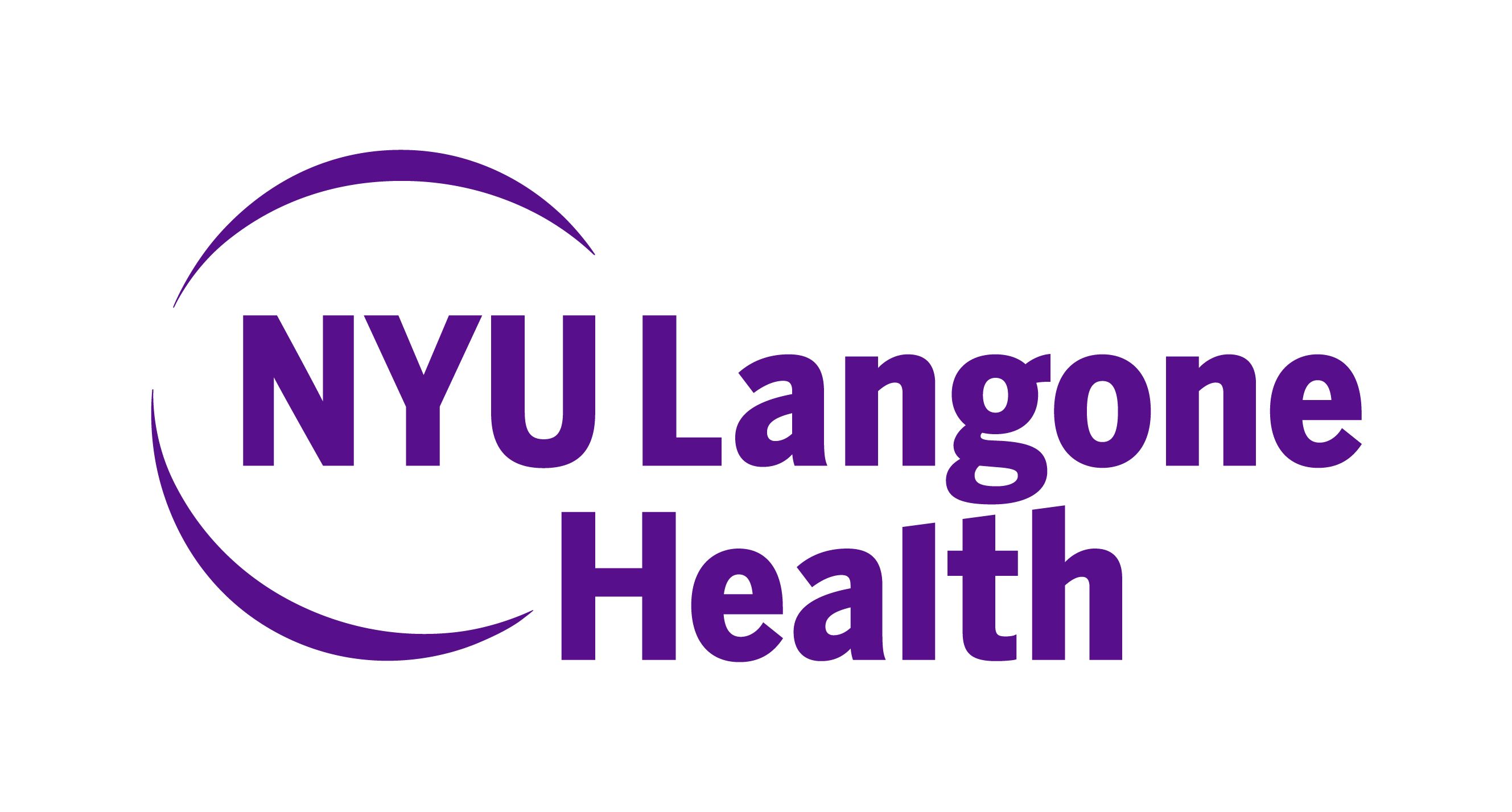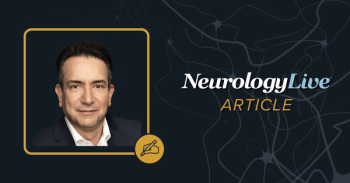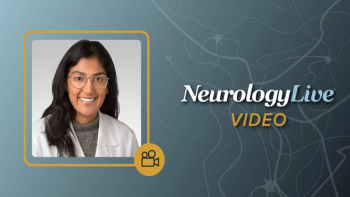
NYU Langone’s Comprehensive Epilepsy Center Elevates Care Standards, Drug Development

Led by a team of top talents, NYU Langone’s Comprehensive Epilepsy Center’s contributions to drug development and improving the quality of life for patients stand among the field's most important.
This piece is part of our Gold Standard Centers feature series. For more of the series,
Driven by a core mission to provide excellence in patient care,
A Team Approach to Care
The center is led by Orrin Devinsky, MD, a world-renowned epilepsy researcher and activist within the community. Devinsky holds several roles within the program, including lead investigator for the Cannabidiol Trials for Epilepsy, as well as principal investigator of the SUDC Registry and Research Collaborative, a multisite collaborative that studies sudden unexplained death in children (SUDEP), created at NYU Langone and including partners Columbia University, Mayo Clinic, and notable national based forensic pathologists.1
Devinsky has been a pioneer in the field and has led some of the most notable research within the epilepsy community. Since Devinsky’s earliest research efforts, dating back to 1982, he’s become a goliath of the literature, publishing more than 600 articles and book chapters, writing or editing more than 20 books, and acting as the principal investigator for multiple antiepileptic drug clinical trials. Despite his renown, the team based approach remains a key to NYU Langone’s care model, and his leadership sets an example for clinicians within the center to follow.
"We meet every week with [Orrin] Devinsky, [Jacqueline] French, [Katherine] Inoyama, etc. Everyone on the team has a different prospective and a different talent that can only make us better,” Blanca Vazquez, MD, told NeurologyLive. “When I say we blossom, I know that because when I sit in on these meetings, I somehow make it happen. It’s not just one person, it’s a collaboration. The uniqueness of our day-to-day operation is that we’re enchanted by this notion of ‘we can.’”
Vazquez, who is a clinical assistant professor in the Department of Neurology at NYU Grossman School of Medicine, and director of Epilepsy Clinical Trials and and the International Programs for the Epilepsy Service, has been around since the birth of the center, starting out as a fellow. She’s served as the director of Epilepsy Clinical Trials for 30 years and explained that the depth of talent at the center only helps its clinicians improve.
A team approach to treating epilepsy remains a core value of how the center operates. The team includes neurologists, neurosurgeons, and epileptologists, all who care for people with different epilepsy types and seizure disorders, including those that are most difficult to treat. For individuals whose epilepsy is not well-controlled through medication, the center has neurosurgeons on staff trained to perform several different surgical options. Patients also receive care from neuropsychiatrists, neuropsychologists, nurses, nurse practitioners, and EEG technologists who specialize in epilepsy. There is also a nutrition program for which dietitians on staff can help treat epilepsy with dietary interventions such as ketogenic and modified Atkins diets.
For Daniel Friedman, MD, having different types of experts in a centralized location is among the greatest advantages the center has to offer. Friedman, an epilepsy physician and professor in the Department of Neurology at NYU Grossman School of Medicine, told NeurologyLive, “We have adult and pediatric epilepsy specialists under one roof. One of the big burdens in epilepsy care is the transition of care from young children to adult epilepsy specialists. There are infrastructures in many places on how to do that transition, [so] it’s very easy here because my colleague can walk down the hall and refer a patient to them.” Friedman also currently serves as the codirector of Special Procedures for the Epilepsy Service and codirector of the Video-EEG Laboratory.
Available Programs and Facilities
In addition to the variety and depth of available clinicians, the center contains several niche programs that offer specialized epilepsy care. The Pediatric Epilepsy Program is among them and is staffed by pediatric neurologists and other experts who care for infants and children. Additional programs focused on the most complex epilepsy disorders include the Dravet Center, Center for Epileptic Encephalopathies, and Angelman Syndrome Clinic.2
Through the International Epilepsy Program, patients can also receive specialized care in accordance with their cultural background. This includes multilingual members of NYU’s staff who have established relationships with multiple epilepsy centers and neurologists around the world, which lends itself to another offering of the program: the facilitation of the continuing medical education for physicians from countries outside the US.3 Each year, the program organizes a symposium that brings neurologists from around the world to NYU Langone. Additionally, the International Epilepsy Program is associated with the Comprehensive Epilepsy Center–Sleep Center, a dedicated facility for the study of sleep disorders in children and adults—including those triggered by epilepsy—helping to further the center’s collaborative philosophy.
NYU additionally offers a specialized center for women, the Women of Epilepsy Clinic, which is co-directed by Katherine Inoyama, MD, and Santoshi Billakota, MD. There, clinicians focus on how epilepsy impacts women throughout stages of their life, most notably pregnancy and the postpartum period.
"Even before a woman becomes pregnant, we address things about contraception, as well as their plans for future pregnancy,” Inoyama told NeurologyLive. "It’s really important to plan these things early on because of how the medications and other things can impact both their fetus as well as themselves.”
Throughout pregnancy, patients are counseled on which medications are the most efficacious and safe to use. The clinic also works hand-in-hand with the patient’s OB/GYN throughout the pregnancy to ensure that all of their medical needs are met. Inoyama also noted that she meets with all of her pregnant patients a minimum of 3 times—once during each trimester—to discuss any pertinent cautionary details for her patients related to their epilepsy management.
For patients who are not pregnant but still require the addressing of disease-specific issues, the Center for Epileptic Encephalopathies, a subset of the Comprehensive Epilepsy Center, helps patients navigate the challenges caused by epileptic conditions. These include patients who have continuous spike waves in sleep, Landau-Kleffner syndrome, electrical status epilepticus of sleep, autism with regression, benign epilepsy variants, and benign occipital epilepsies.4
Pioneers in Epilepsy Research
Several of the advances in care for patients with epilepsy in recent years have been made, in part, because of the efforts from investigators at the Comprehensive Epilepsy Center. Most notably, Devinsky served as the lead investigator of the GWPCARE study group, which evaluated cannabidiol (CBD; Epidiolex; GW Pharmaceuticals) in patients with rare epilepsies such as Dravet syndrome (DS) and Lennox-Gastaut syndrome (LGS).5
Those efforts in GWPCARE culminated in June 2018, when the FDA made a landmark decision to approve the treatment for both DS and LGS in patients 2 years of age and older, marking the first approval of a drug for the treatment of patients with DS.6 Just 2 years later, in 2020, the FDA greenlit a new indication for CBD for the treatment of seizures associated with tuberous sclerosis complex (TSC), a rare disease that is the leading cause of genetic epilepsy.7
Devinsky’s research on CBD earned him a spot in TIME magazine’s 2018 list of 50 Most Influential People in Health Care.8 He and coinvestigators have not stopped with that success, though, and are currently conducting studies on several investigational antiepileptic medications such as topiramate, tiagabine, lamotrigine, vigabatrin, oxcarbazepine, and ramacemide.1
"We were very proud of that work, not only because [CBD] was different, but because it also required a lot of education for patients and families to understand this different therapy. We also work hard in areas where it’s a unique process [with complex therapies], as opposed to bringing in 1 therapy for all. I think that makes us very different,” Vazquez, who also is also clinical trials codirector, said.
The research teams at the Comprehensive Epilepsy Center have had their hands on a variety of projects, including those in drug development, the genetics of epilepsy and genetic therapies, SUDEP, treatments for neuroinflammation-induced epilepsy, TSC, as well as the cross section of autism and epilepsy. Many of the research initiatives are supported by Finding a Cure for Epilepsy and Seizures, or FACES, which funds research to improve epilepsy care, advances new therapies, and fosters a supportive community for children, families, and caregivers who live with the challenges of epilepsy.
There are currently 16 research coordinators and more than 30 active research studies ongoing at the center. These include the Human Epilepsy Project (HEP), which is designed to identify biomarkers that predict epilepsy progression, treatment response, and outcomes in people with recently diagnosed focal epilepsy.9
"Hopefully this will allow us to more quickly identify best therapies and tell people what to expect from the course of their epilepsy. These are bigger projects that will hopefully define and move the field forward,” Friedman said regarding HEP. Findings from that effort arguably have begun to have such an impact, as data from the HEP published by the center’s own Jacqueline French, MD, and colleagues in October 2020 showed that delayed identification of focal epilepsy can lead to morbidity-related consequences, such as motor vehicle accidents. The work pointed to the need to improve nonmotor seizure recognition, ultimately suggesting a gap in care for those whose disease onset features these seizures.10
Friedman and Devinsky have been involved in several research efforts that assess the risk factors, mechanisms, epidemiology, neuropathology, and genetics of SUDEP. The center also launched the North American SUDEP Registry in 2011, which connects key leaders and researchers from around the world with clinicians from NYU Langone. The largest international study of SUDEP has also been initiated and includes data collected from the US, Canada, Europe, and Australia.
The commitment to research has run deep through education as well. The NYU Grossman School of Medicine was ranked the second-best medical school in the nation for research, according to U.S. News’ 2022 “Best Graduate Schools.”11 In addition, there are currently 220 laboratories devoted to biomedical research and 53 countries represented within those labs at the school.
Studies of women with epilepsy, with the aforementioned particular focus on the care of these women during their childbearing years, has long been a commitment for the center. It remains just 1 of 3 centers that conducted the Women with Epilepsy: Pregnancy Outcomes and Delivery (WEPOD) study, which demonstrated for the first time that women with epilepsy do not have specific problems with fertility and that the rate of miscarriage is no higher in women with epilepsy than in women without epilepsy.9
"My hope is that in the future we’ll be able to gather additional data about the exposure of anti-seizure medications and how they can impact a fetus. That’s down the road and still in the works,” Inoyama noted.
Utilizing Technology and Growing Precision Medicine
There has also been an effort within the center to improve the quality of life for patients with epilepsy through advances in technology. Noninvasive and easy-to-use sensors that detect seizure-related movements, muscle activity, and changes in autonomic function have been heavily researched at NYU Langone. The center has been involved in studies examining the accuracy of these sensors, including the MP5 mattress movement monitor, the Brain Sentinel SPEAC surface EMG sensor, and the Empactica Embrace watch.12
"It’s no joke that we need to embrace technology. We have had amazing developments in neuroimaging, fMRI, PET MRI, electroencephalography (EEG), and tractography,” Vazquez told NeurologyLive. "We don’t just look at standard EEGs, [either]. We have stereo EEGs, intracranial EEGs, high-intensity EEGs. Understanding the primary pathology and treating on an individual basis, or using precision medicine, has allowed us to develop so many different teams."
Some patients whose epilepsy is more difficult to control may be eligible to undergo epilepsy surgery as an option for treatment. These procedures are extremely sensitive and must only be performed by highly trained experts, making the past 6 years at NYU Langone particularly notable, as its surgeons have performed more than 300 brain surgeries for adults with epilepsy in that time. Approximately 90% of the best candidates for surgery have had complete seizure control after surgery at the center, and another roughly 65% of those who have had epilepsy surgery at the center have become free of seizures completely.12
Types of surgeries the center conducts include temporal lobe section, corpus callosotomy, lesionectomy, hemispherectomy and hemispherotomy, multiple subpial transection, and resection of frontal, paretal, or occipital areas of the brain. Vagus nerve stimulation (VNS), which involves implanting a stimulating device the size of a silver dollar under the skin of the upper chest, has been performed by NYU experts about 1700 times. Following implantation, the physician programs the device to deliver small electrical signals to the vagus nerve and into the brain at periodic intervals.13
"With these devices, we meet with patients regularly to do programming and tweak the settings, as well as improve detection sets or stimulation parameters. It takes time, but the effect has been very promising,” Inoyama noted. "I’ve seen a lot of success stories with these devices. We are also involved in the RNS post approval studies by tracking patients and their seizure frequencies to see how the procedure is impacting them.”
RNS, or responsive neurostimulation, has been another revolutionary option for individuals older than 18 years who have poorly controlled focal epilepsy and are not candidates for other procedures. Unlike VNS, the RNS device automatically detects a seizure when it happens. The person with the device uses a remote monitor to send data from the device to a cloud database, after which is then reviewed by the treating doctor.14
On top of these procedures, the Comprehensive Epilepsy Center also offers 16 inpatient video-EEG-monitored beds in a specialized Epilepsy Monitoring Unit. Each bed has the capacity for 64 channels of EEG data with online computer analysis for 24-hour seizure and spike detection.1
Vazquez explained that the overall collaborative nature of the center and the far-reaching efforts of the physicians and clinicians who operate within it has given her a great sense of pride since coming to the center. “Coming to the community and understanding the doctors and how they work in different areas has been very fulfilling for my mission as a physician to have this quality of comprehensive epilepsy care accessible to patients in the Brooklyn community,” she said.
"Something that is sometimes hard to define is the quality of providers that you work with. Not just in research, but in the care that they deliver and the devotion that they have towards their patents,” Inoyama added. "That’s something special that we have at NYU that can’t necessarily be measured in metrics or papers. That type of care might not necessarily be available everywhere."
REFERENCES
1. Orrin Devinsky. My research. NYU Langone Health website. Accessed August 4, 2021. https://nyulangone.org/doctors/1679581623/orrin-devinsky .
2. Comprehensive Epilepsy Center. NYU Langone Health website. Accessed August 4, 2021. https://nyulangone.org/locations/comprehensive-epilepsy-center .
3. International Epilepsy Program. NYU Langone Health. Accessed August 4, 2021. https://nyulangone.org/locations/comprehensive-epilepsy-center/international-epilepsy-program .
4. Center for Epileptic Encephalopathies. NYU Langone Health website. Accessed August 4, 2021. https://nyulangone.org/locations/comprehensive-epilepsy-center/center-for-epileptic-encephalopathies .
5. Devinsky O, Patel AN, Cross H, et al. Effect of cannabidiol on drop seizures in the Lennox-Gastaut syndrome. N Engl J Med. 2018;378:1888-1897. doi: 10.1056/NEJMoa1714631
6. FDA Approves first drug comprised of an active ingredient derived from marijuana to treat rare, severe forms of epilepsy. News release. FDA. June 25, 2018. Accessed August 4, 2021. https://www.fda.gov/news-events/press-announcements/fda-approves-first-drug-comprised-active-ingredient-derived-marijuana-treat-rare-severe-forms
7. FDA approves Epidiolex (cannabidiol) oral solution to treat seizures associated with tuberous sclerosis complex. News release. GW Pharmaceuticals. August 3, 2020. Accessed August 4, 2021. https://www.globenewswire.com/news-release/2020/08/03/2071601/0/en/FDA-Approves-EPIDIOLEX-cannabidiol-Oral-Solution-to-Treat-Seizures-Associated-with-Tuberous-Sclerosis-Complex.html
8. NYU Langone Visionaries included in TIME Magazine’s 50 Most Influential People in Health Care 2018. News release. NYU Langone. October 18, 2018. Accessed August 4, 2021. https://nyulangone.org/news/nyu-langone-visionaries-included-time-magazines-50-most-influential-people-health-care-2018
9. Comprehensive Epilepsy Center Research. NYU Langone Health website. Accessed August 4, 2021. https://med.nyu.edu/departments-institutes/neurology/divisions-centers/epilepsy/research .
10. Pellinen J, Tafuro E, Yang A, et al. Focal nonmotor versus motor seizures: The impact on diagnostic delay in focal epilepsy. Epilepsia. 2020;61(12):2643-2652. doi: 10.1111/epi.16707.
11. 2022 Best Medical Schools: Research. US News. Updated 2021. Accessed August 4, 2021. https://www.usnews.com/best-graduate-schools/top-medical-schools/research-rankings .
12. Surgery for Epilepsy & Seizure Disorders in Adults. NYU Langone website. Accessed August 4, 2021. https://nyulangone.org/conditions/epilepsy-seizure-disorders-in-adults/treatments/surgery-for-epilepsy-seizure-disorders-in-adults .
13. Vagus nerve stimulation for epilepsy & seizure disorders in adults. NYU Langone website. Accessed August 4, 2021. https://nyulangone.org/conditions/epilepsy-seizure-disorders-in-adults/treatments/vagus-nerve-stimulation-for-epilepsy-seizure-disorders-in-adults
14. Responsive neurostimulation for epilepsy & seizure disorders in adults. NYU Langone website. Accessed August 4, 2021. https://nyulangone.org/conditions/epilepsy-seizure-disorders-in-adults/treatments/responsive-neurostimulation-for-epilepsy-seizure-disorders-in-adults
Newsletter
Keep your finger on the pulse of neurology—subscribe to NeurologyLive for expert interviews, new data, and breakthrough treatment updates.



























